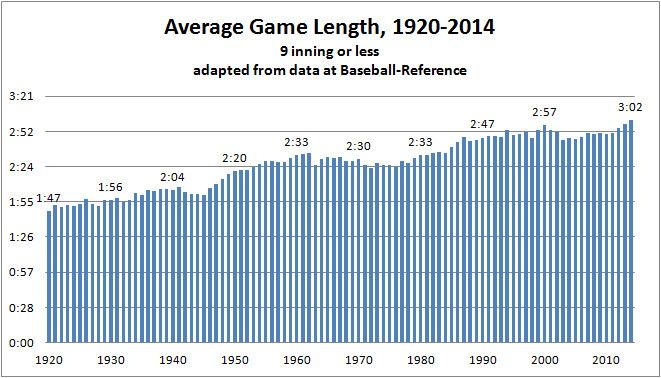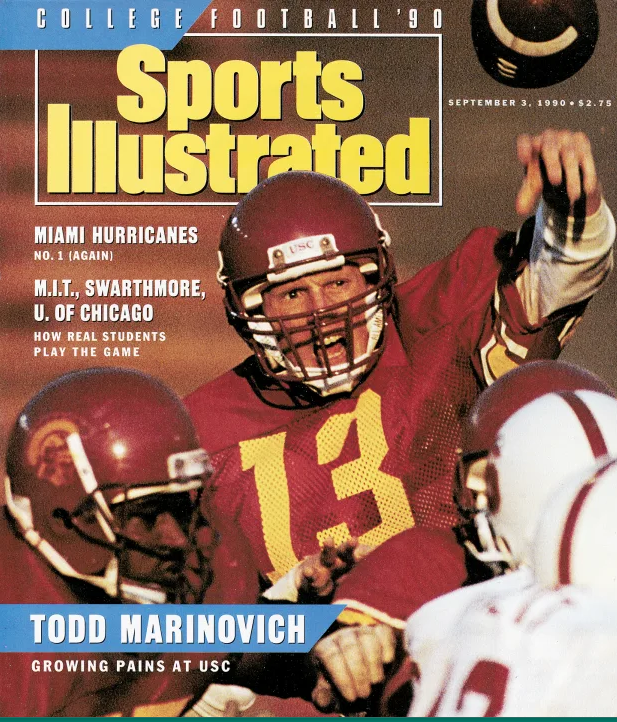Baseball: Change the rules
-
George Will
https://www.washingtonpost.com/opinions/2021/07/09/time-has-come-save-baseball-by-changing-rules/
Opinion: Baseball is losing its entertainment value. It’s time to change the rules.
Even if you belong in the basket of deplorables — Americans uninterested in baseball — you should be intrigued by the sport’s current problems. At the all-star break, Major League Baseball’s 2021 season is demonstrating, redundantly, that the quality of the game as entertainment is declining. Paradoxically, the problems arise from reasonable behavior based on abundant accurate information.
Improved technology generates data about pitches’ spin rates, the launch angles of batters’ swings, particular batters’ tendencies on particular pitches and much more. Improved kinesiology increases pitching velocity. The results include a slower pace of play, diminished action, fewer balls in play and more of them handled by radically repositioned infielders.
Five seasons ago, there were 3,294 more hits than strikeouts. Three seasons ago, strikeouts edged past hits. Writer Jayson Stark notes that until 2018 there had never been a month with more strikeouts than hits. This April there were almost 1,100 more strikeouts than hits, and writer Tyler Kepner says this season is on a pace for approximately 5,000 more strikeouts than hits. Twenty-four percent of plate appearances end in strikeouts (they are increasing for the 16th consecutive season, partly because today’s average fastball’s velocity is 93.8 mph, 2.7 mph more than 14 years ago. As of mid-June, the .238 collective major league batting average was 15 points below 2019. In 2015, teams shifted infielders on 9.6 percent of all pitches. This season, teams are shifting on 32 percent (usually an infielder in shallow right field), which will erase perhaps 600 hits.
With pitchers dawdling to recover between high-exertion, high-velocity pitches and with 36 percent of at-bats ending with home runs, strikeouts or walks, around four minutes pass, on average, between balls put in play. Players spend much more time with leather on their hands than with wood in their hands, but have fewer and fewer opportunities to display their athleticism as fielders. Home runs predominate because scoring by hitting a ball far over defensive shifts is more likely than hitting three singles, through shifts, off someone throwing 98 mph fastballs and 90 mph secondary pitches. This means fewer baserunners. In 2021, there probably will be 1,000 fewer stolen bases than 10 years ago.
Writer Tom Verducci notes that in the last 26 minutes of 2020’s most-watched game, the final World Series game, just two balls were put in play. In this game, the ball was put in play every 6.5 minutes, and half the outs were strikeouts.
More pitches and less contact. Longer games (13 minutes 17 seconds longer than a decade ago) and less action. No wonder fans who have been neurologically rewired by their digital devices’ speeds are seeking other entertainments. Major league attendance has fallen 14 percent from its 2007 peak.
Last season, MLB made an action-creating change — a runner is placed on second base to begin each extra half-inning. And MLB is experimenting with other changes in various minor leagues.
Because pitching velocity is suffocating offense, MLB could move the pitcher’s mound back a foot (from today’s 60 feet six inches) to give batters more reaction time. The changed physiology of pitchers has, in effect, moved the mound closer to home plate: In the 1950s, the Yankee’s 5-foot 10-inch Whitey Ford had a Hall of Fame career. Today, 6-foot 4-inch pitchers, with long arms and long strides, release the ball significantly closer to the plate than Ford did.Requiring four infielders to be on the infield dirt — or, even bolder, requiring two infielders to be on the dirt on each side of second base — as the pitch is thrown, would reduce reliance on home runs, which are four seconds of action, followed by a leisurely 360-foot trot. A 20-second pitch clock might reduce velocity by reducing pitchers’ between-pitches recovery time. And by quickening baseball’s tempo, the clock might prevent batters from wandering away from the batter’s box and ruminating between pitches. Stolen bases might increase if pitchers had to step off the rubber before throwing to first base. After a walk and then a steal, one single would produce a score.
Baseball fans, a temperamentally conservative tribe, viscerally oppose de jure changes to their game. They must, however, acknowledge the damage done to it by this century’s cumulatively momentous de facto changes in the way it is played. What Edmund Burke said of states is pertinent: “A state without the means of some change is without the means of its conservation.”
-
Yes, there are problems.
The game has changed, not for the better.
I would slow the ball before I moved the pitcher's mound.
Or lower the mound, again. It was lowered 5 inches in 1968.
If they ever try to change 90 feet between bases that will be the end of the game.
-
Yes, there are problems.
The game has changed, not for the better.
I would slow the ball before I moved the pitcher's mound.
Or lower the mound, again. It was lowered 5 inches in 1968.
If they ever try to change 90 feet between bases that will be the end of the game.
-
I think they have played with the seams before.
They can make the seams a little bigger to introduce drag.
This is debatable, endlessly.
Because the ball doesn't just travel from the pitcher to the batter. Other players throw it and catch it and it gets hit.
But I think this might be better than changing distances.
They could, maybe, make it a little softer. That doesn't slow the pitch, but it could reduce home runs.
-
In 1884, Old Hoss Radbourn pitched in 75 games.
He started 73 of them and won 60, with 678 innings pitched
And he did it for $3,000.
https://www.baseball-reference.com/players/r/radboch01.shtml
This is how pitchers should pitch.
Justin Verlander won the Cy Young award in 2019
Started 34 games won 21, 223 innings pitched
-
@jolly said in Baseball: Change the rules:
Most starters today, only pitch five or six innings.
And still have Tommy John’s Surgery before they are 25…
-
Before I added a clock for the pitcher, I’d require any relief pitcher to have to pitch to three batters at least… The biggest delay in baseball today are the pitching changes… Managers will take out their starter, bring in a reliever that warms up for 5 minutes, pitches to one batter, then they pull him and bring in another reliever who proceeds to warm up for another 5 minutes. It’s absurd and overly specialized.
Oh, and get rid of the DH!
And at least 8 members of a football team need to be required to play both sides of the ball! And no more specialists as kicker or punter!
-
Separate but related:
"The Indiana Jones of baseball without the coordination."
Fan Takes Mighty Spill Trying to Catch Matt Olson Dinger. This certainly could have been worse. Any time spent tumbling wildly down to concrete is not advisable. If all's good though, there are worst things to be known for than giving it 110 percent for a dinger-related artifacts.
More, incl video: https://www.thebiglead.com/posts/fan-takes-mighty-spill-trying-to-catch-matt-olson-dinger-01faemmdf12c?utm_source=RSS
-
@jolly said in Baseball: Change the rules:
Most starters today, only pitch five or six innings.
And still have Tommy John’s Surgery before they are 25…
@lufins-dad said in Baseball: Change the rules:
@jolly said in Baseball: Change the rules:
Most starters today, only pitch five or six innings.
And still have Tommy John’s Surgery before they are 25…
But a lot of that is because of how players are developed today. Remember Big Ben, who pitched at LSU? Ben's dad was absolutely maniacal about making his son into a major league player and that kid must have played baseball year-round as a young kid and even when he was in high school at Gonzales.
That used to be unusual. Now, it's commonplace. And kids on the travel teams are playing at a higher level of competition.
It's no wonder their arms have major problems at 25...

 image url)
image url)